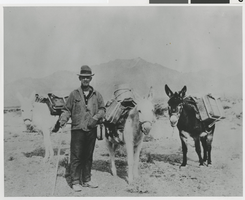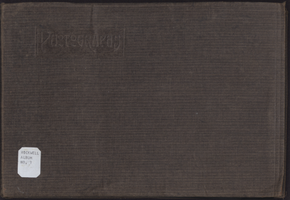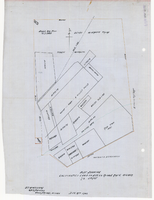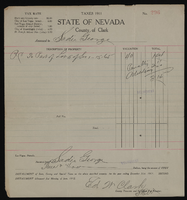Search the Special Collections and Archives Portal
Search Results
Fleming, Edmund L., 1915-
Edmund L. Fleming was born October 18, 1915 in Virginia, Minnesota. His parents were born in Ireland. Fleming came to Nevada in the 1930s and worked on a ranch in Pahrump, Nevada. He also worked as a miner, teacher, ranger, and farmer. He lived in Goodsprings, Nevada and Nelson, Nevada. Fleming eventually settled in Las Vegas, Nevada and continued to work in education. He was married in 1941.
Person

George Williams and donkeys: photograph
Date
Archival Collection
Description
Image
Elizabeth von Till and Claude N. Warren Professional Papers
Identifier
Abstract
The Elizabeth von Till and Claude N. Warren Professional Papers (1916-2021) are comprised of the personal and professional papers of anthropologist Claude N. Warren and historical preservationist Elizabth von Till Warren. The materials in this collection primarily consist of research files, maps, and drawings on various archaeological and historical preservation projects in southern Nevada of which they both were involved. This collection includes field notes and surveys from archaeological projects such as the Old Las Vegas Mormon Fort and the Las Vegas Springs Preserve. Records on von Till Warren's involvement with the Old Spanish Trail Association, Southern Nevada Historical Society, and historic preservation work around southern Nevada are represented. Also included are Robert H. Crabtree's archaeological research files, a colleague of Claude Warren who bequeathed his professional files to him upon his death.
Archival Collection

Photograph album 1, Leon Rockwell Collection, circa 1900s-1910s
Date
Archival Collection
Description
Image
Thomas, Charles W., 1860-1937
Charles William Thomas was born July 29, 1860 in what would soon become Nevada. He and his family are known as early settlers in Nevada, and lived in various locations around Nevada including Beatty, Pioneer (near Goodsprings), and Searchlight, where he operated a merchantile store. Thomas became the postmaster of Pioneer, Nevada in October 1911. He died on August 16, 1937.
Person
Bonnie and Al Levinson Papers on Bonnie Springs Ranch
Identifier
Abstract
The Bonnie and Al Levinson Papers on Bonnie Springs Ranch contains visual and promotional materials from the 1960s to 2014 about Bonnie Springs Ranch located in Las Vegas, Nevada. The materials depict events and shows that occurred at the ranch; its guests, employees, petting zoo animals; and document the buildings on the property as well as the surrounding areas, including Red Rock Canyon. Also in the collection are photographs from other locations in Nevada, such as Belmont, Goodsprings, and Las Vegas. The collection also includes digital photographs of Bonnie Springs Ranch from 2008 depicting trail rides as well as the snow storm that fell on the Las Vegas Valley on December 17, 2008. The collection contains a significant amount of promotional materials about Old Nevada, a recreation of an 1880s mining town, as well as press releases and magazines and newspaper articles featuring the ranch.
Archival Collection

Plat showing cultivated land in the Stewart Ranch, Las Vegas, Nevada, December 8, 1902
Date
Archival Collection
Description
Image
Phillips, Joseph Tooley, 1912-1984
Joseph Tooley Phillips was born in Los Angeles, California on September 24, 1912 to Las Vegas, Nevada-residents, George and Marguerite Tooley, due to the lack of hospitals in Las Vegas. His father died in 1918, and the family moved to Oregon. His mother later remarried. Joesph Tooley Phillips returned to southern Nevada and worked at the Chiquita Mining Company in Goodsprings. After serving in World War II, he returned to Las Vegas and worked as an engraver at the Las Vegas Review-Journal and, later, the Las Vegas Sun. He passed away in 1984.
Person

Tax notices: Sadie George
Date
Archival Collection
Description
Text

Transcript of interview with Marion Brooks by Kathleen Kasmir, February 24, 1975
Date
Archival Collection
Description
On February 24, 1975, Kathleen Kasmir interviewed Marion Brooks (born 1913 in Santa Ana, California) about his life in Southern Nevada and his work as a mining engineer. Brooks first talks about his background before talking extensively about his early work in mining. Brooks also mentions some of the professional mining societies of which he was a part, and the two then move on to discuss gambling, recreational activities, and the atomic testing. Other topics covered during the interview include the price of groceries and food, the El Rancho Vegas, social changes, population growth, and environmental changes. The end of the interview then shifts back to Brooks’ work in mining at Blue Diamond and then a discussion on the possible locations of three lost mines.
Text
